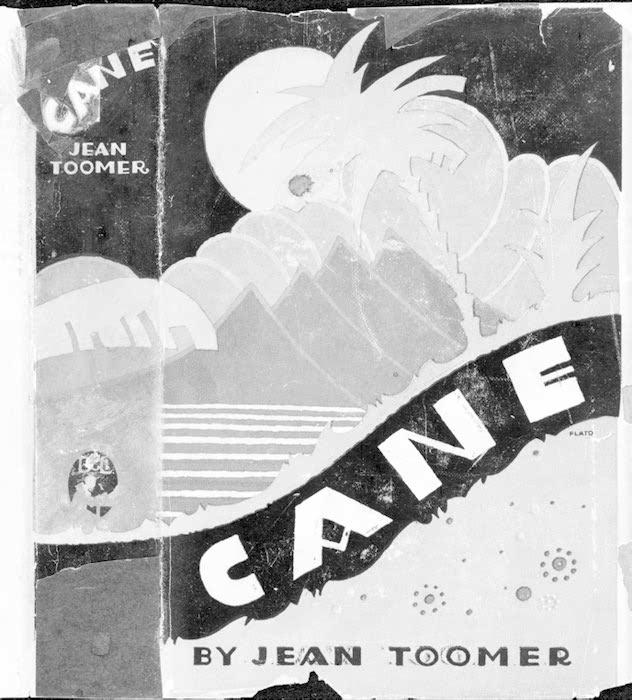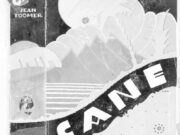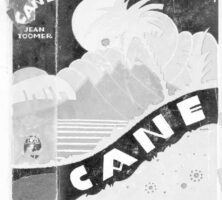The generative force behind Jean Toomer’s great work Cane was Georgia.
Toomer grew up amid the African American elite in Washington, D.C., and attended the University of Wisconsin, the Massachusetts College of Agriculture, the American College of Physical Training in Chicago, the University of Chicago, and City College of New York. In 1920 he decided to become a writer, filled a trunk with manuscripts, and the next fall, at the age of twenty-six, took a position in Sparta, Georgia, as the substitute head of a small industrial school for Black students. On the train home to Washington just three months later, in November 1921, he began writing the first of the segments that would become part of the Modernist masterpiece published in 1923 as Cane.

“Things are so immediate in Georgia,” remarks the narrator in explaining the agony of Toomer’s alter ego, Kabnis, in the final section of the work. “God Almighty, dear God, dear Jesus, do not torture me with beauty,” Kabnis beseeches. “Take it away. Give me an ugly world. Ha, ugly…. Dear Jesus, do not chain me to myself and set these hills and valleys heaving with folk-songs. So close to me that I cannot reach them. There is a radiant beauty in the night that touches and… tortures me. Ugh. Hell. Getup you damn fool. Look around. Whats beautiful there? Hog pens and chicken yards. Dirty red mud. Stinking outhouse. Whats beauty anyway but ugliness if it hurts you?”
Georgia forced the mixed-race Toomer (and Kabnis) to confront the African American past—the mixture of agrarian beauty, spiritual yearning, violence, and oppression—and to ponder his own place within the races and within the race to which society assigned him. Toomer responded with a mixture of poetry, lyrical sketches, short stories, vignettes, and finally, in the work’s third and final section, the genre-bending “Kabnis,” which mixes the lyric, the narrative, and the dramatic modes. The resulting composite, Cane, evokes powerful feelings of aesthetic pleasure, despair, confusion, and longing for mystical transcendence.
The first section, set in Georgia, is a collection of sketches and stories interspersed with poems, both imagist lyrics and verse inspired by African American spirituals. Focused upon women who are allied with nature and promise to serve as mediums to mystical fulfillment, the prose pieces finally document failure and alienation. The haunting beauty of the landscape and the prose that captures it are, in the end, overwhelmed by the horror of racial injustice and oppression. The second section, set in the North, is dominated by images of enclosure. Cut off from spirituality, spontaneity, and history, the focal characters are southern migrants who feel thwarted, conflicted, and finally confused even about their place within the race. The third section is a return to Georgia, where the Toomer figure, the northern man Kabnis, is both drawn to and tortured by the South and the racial past. Through its characters the Kabnis section presents an entire gallery of African American response, and then in the end a symbolic descent into the womb of time, where a blind prophet brings the word that the only sin is that against the soul. At the conclusion, as Kabnis climbs up into the dawn, Toomer achieves an ambiguity as rich as that of the poet T. S. Eliot at the end of The Waste Land.
The white literary avant garde responded to Cane with enthusiasm. The African American reaction was divided, it seems, among generational lines. The educator W. E. B. Du Bois saw in the work real talent but found it needlessly confusing and opaque. The writer Langston Hughes, on the other hand, greeted it as the finest prose by an African American.
Toomer was to comment that the writing of Cane was probably the most painful event in his life. “Never again in life,” he said, “do I want a repetition of those conditions.” But the rich and strange work stands as the literary pinnacle of his career. Never again did he write anything matching its quality and power as he went on to immerse himself in mystic cults, Eastern religions, Quakerism, and psychoanalysis.
Nothing touched Toomer so profoundly as the few months he spent in Georgia. As he enunciates in the poem “Song of the Son” from Cane, in Georgia he had returned to the past just before it vanished:
O land and soil, red soil and sweet-gum tree,
So scant of grass, so profligate of pines,
Now just before an epoch’s sun declines
Thy son, in time, I have returned to thee,
Thy son, I have in time returned to thee.
In time, for though the sun is setting on
A song-lit race of slaves, it has not set;
Though late, O soil, it is not too late yet
To catch thy plaintive soul, leaving, soon gone,
Leaving, to catch thy plaintive soul soon gone.
When Toomer turned his back on the pain caused by his own return to the roots of African American life and ceased trying to come to terms with his own racial identity, he lost the great subject for his art.





